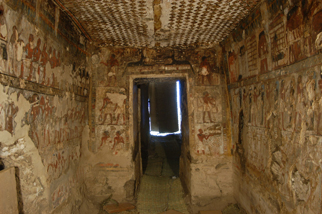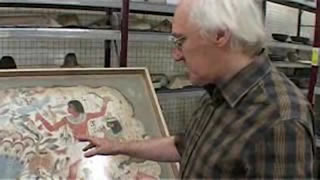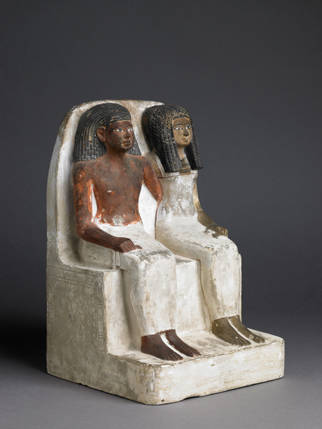6 Tomb decoration
The tomb-chapel was filled, practically from floor to ceiling, with painted decorations and accompanying hieroglyphic inscriptions (Figure 21). On the basis of a study of decorated Eighteenth Dynasty Theban tomb-chapels undertaken in the 1980s, Lise Manniche drew up a summary of the paintings they would typically contain:
- representation of the reigning king
- scenes relating to the office of the tomb-owner
- the tomb-owner making offerings
- the tomb-owner fishing and fowling
- hunting in the desert
- agricultural scenes
- wine making
- offering bringers
- banquets
- the funeral procession
- the deceased's voyage to Abydos
- rituals before the mummy, including the ceremony of Opening of the Mouth.

Watch this video in which Richard Parkinson and Paul Wood talk about interpreting Nebamun paintings.

Transcript
One of the effects of this information is to underline just how much is missing from Nebamun's tomb-chapel. The surviving fragments are, of course, parts of paintings; but more than that, many of the paintings have simply not survived at all. Neither has the sculpture of Nebamun and his wife, which would have been placed in a niche at the far western end of the rooms (Figure 22), nor the stela which would have contained a biographical text.

Even if not all of these were present in any one tomb, it is easy to see how little of the decoration of Nebamun’s tomb has survived. What has seems mostly to be from the outer room, which normally contained the scenes concerning the life of the deceased person. Very little has come down to us from the inner passageway and room containing the scenes of the funeral and entry into the afterlife; and it is likely these would have been there. Manniche writes that ‘there is scarcely a single tomb of those with completely preserved decoration that omits it’.
